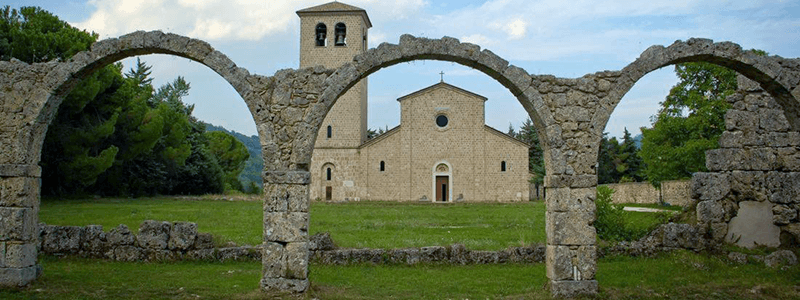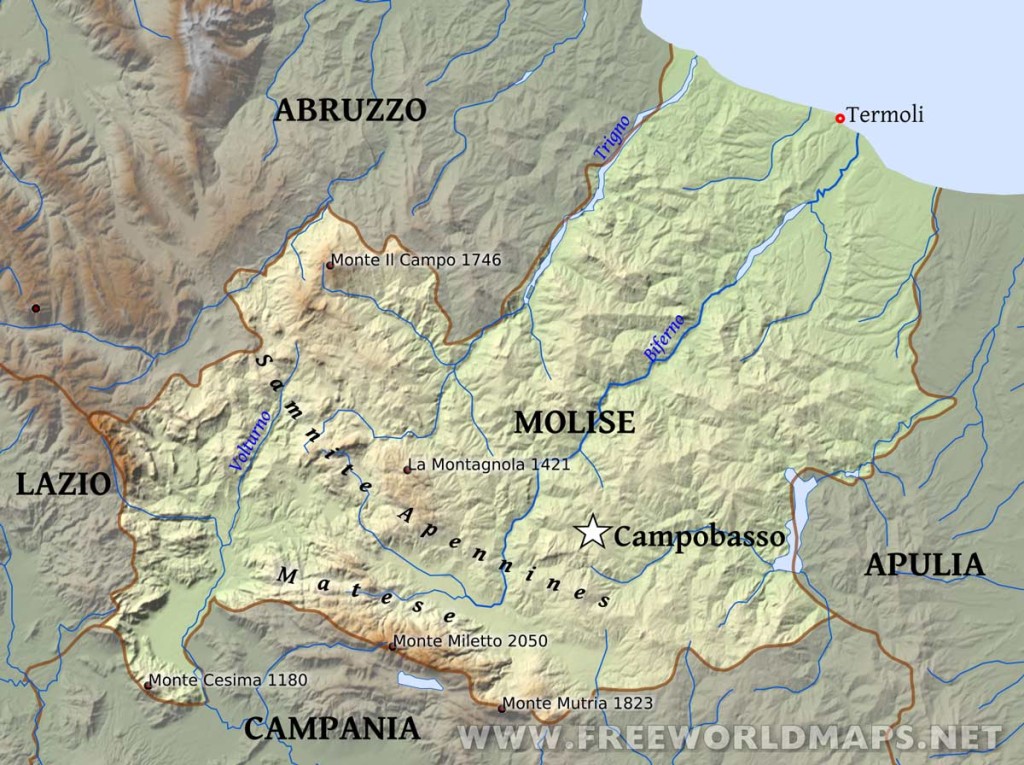
Tucked between Abruzzo, Lazio, Campania, and Puglia, the Region of Molise is one of Italy’s least explored and most authentic regions. Known for its ancient Samnite heritage, Roman ruins, medieval villages, and breathtaking mountains, Molise remains untouched by mass tourism, offering a unique glimpse into traditional Italian life.
While many visitors overlook this small region, those who take the time to explore Molise’s hidden treasures will find a land of rolling hills, historic castles, and some of the most spectacular natural landscapes in southern Italy.
A Brief History of Molise
From the Samnites to Modern Times
Molise’s history dates back thousands of years, shaped by Italic tribes, Romans, and medieval rulers:
- Samnite Civilization (7th–3rd century BC) – Molise was home to the Samnites, fierce warriors who resisted Roman expansion.
- Roman Rule (3rd century BC–5th century AD) – The Romans built cities, roads, and amphitheaters, leaving behind ruins like Saepinum.
- Medieval Period – The Normans and Lombards fortified Molise with castles and monasteries, some of which still stand today.
- Modern Era – In 1963, Molise became Italy’s youngest independent region, separating from Abruzzo.
Molise is one of Italy’s most traditional and least industrialized regions, preserving a way of life that has disappeared in much of modern Italy.
Top Cities and Towns to Visit in Molise
Campobasso – The Capital of Molise
Campobasso, the regional capital, is a city of medieval charm and modern development.
Must-See Attractions:
- Castello Monforte – A medieval castle offering panoramic views over the city.
- Chiesa di San Bartolomeo – A Romanesque church dating back to the 11th century.
- Museo Sannitico – An excellent museum showcasing Molise’s ancient Samnite culture.
Isernia – One of Italy’s Oldest Cities
Isernia is one of the most historically significant towns in Molise, with roots dating back 700,000 years.
Top Attractions:
- Fontana Fraterna – A beautiful medieval fountain, a symbol of the city.
- Paleolithic Site of Isernia – One of the oldest prehistoric settlements in Europe.
- Cathedral of San Pietro Apostolo – Built on the remains of a Roman temple.
Termoli – The Coastal Gem of Molise
Termoli, Molise’s main seaside town, offers pristine beaches and a charming historic center.
Highlights:
- Castello Svevo – A Norman castle guarding the coastline.
- Borgo Antico – A medieval old town with colorful houses and narrow alleys.
- Trabucchi Fishing Platforms – Traditional wooden fishing structures, unique to the Adriatic.
Agnone – The Land of Bells and Tradition
Agnone is famous for bell-making and ancient artisan traditions.
Must-Visit:
- Pontificia Fonderia Marinelli – The oldest bell foundry in the world, making bells for the Vatican.
- Sant’Emidio Church – Features stunning Baroque architecture.
- Cheese and Truffle Tastings – Agnone is known for its exquisite dairy products and white truffles.
Larino – A Town of Roman and Medieval Treasures
Larino, often overlooked, has some of the best Roman ruins in southern Italy.
Must-See Sites:
- Roman Amphitheater – Once used for gladiator battles.
- Duomo di Larino – A beautiful Gothic cathedral with detailed stone carvings.
Molise’s Hidden Archaeological Gems
Saepinum – Italy’s Most Intact Roman Provincial Town
Saepinum is one of the best-preserved yet least-visited Roman towns in Italy.
Highlights:
- City Walls & Gates – Still standing after 2,000 years.
- Roman Theater – Where audiences once watched performances and gladiator fights.
- Forum & Basilica – Offering a glimpse into daily Roman life.
The Natural Beauty of Molise
Matese Mountains – A Hiker’s Paradise
Molise is home to the Matese Mountains, an untouched wilderness perfect for hiking and outdoor adventures.
Best Trails & Activities:
- Monte La Gallinola Trail – Offers views of the Bay of Naples and the Adriatic Sea.
- Lago del Matese – A stunning alpine lake surrounded by mountains.
- Winter Sports – Skiing and snowboarding at Campitello Matese, one of southern Italy’s best ski resorts.
Oasi WWF Guardiaregia-Campochiaro – A Biodiversity Hotspot
This protected nature reserve is one of Italy’s most ecologically diverse areas.
Must-See:
- Gorges and Waterfalls – Spectacular caves, rivers, and cliffs.
- Wildlife Spotting – Home to wolves, deer, and golden eagles.
Molise’s Traditional Festivals and Unique Culture
La ‘Ndocciata (Torchlight Festival) – Agnone
Held in December, La ‘Ndocciata is one of Italy’s most dramatic Christmas traditions, where locals parade through the streets carrying giant torches.
Carrese Chariot Races – Ururi & San Martino in Pensilis
These ancient Albanian-style horse-drawn chariot races take place every year and are as thrilling as Roman-era competitions.
Feast of Saint Basso – Termoli
A spectacular religious procession by boat, honoring Termoli’s patron saint.
Molise’s Food & Wine: A Taste of Authentic Italy
Molise’s cuisine is hearty and rustic, influenced by both the mountains and the sea.
Must-Try Dishes in Molise
- Cavatelli with Ragù – A homemade pasta dish with slow-cooked meat sauce.
- Pampanella – Spicy roasted pork, a regional specialty.
- Scamorza Cheese – A smoked cheese, best served melted.
- Baccalà Arracanato – Salted cod with breadcrumbs, garlic, and peppers.
Molise’s Best Wines
- Tintilia del Molise – A bold red wine, unique to the region.
- Pentro di Isernia – A refreshing white wine, perfect for seafood.
Getting Around Molise
Public Transport
- Trains – Limited service, but connects major towns like Campobasso, Isernia, and Termoli.
- Buses – Reach smaller villages and rural areas.
Best Way to Explore Molise?
A rental car is recommended for visiting mountain villages, archaeological sites, and remote nature reserves.
Why Visit the Region of Molise?
Molise is one of Italy’s last undiscovered regions, offering:
✅ Ancient Roman and Samnite ruins
✅ Authentic medieval towns and castles
✅ Stunning landscapes, mountains, and beaches
✅ Traditional festivals and artisan culture
Whether you’re exploring the ruins of Saepinum, hiking in the Matese Mountains, or tasting Molise’s incredible food, this hidden gem will transport you back to Italy’s past while offering unspoiled beauty.


